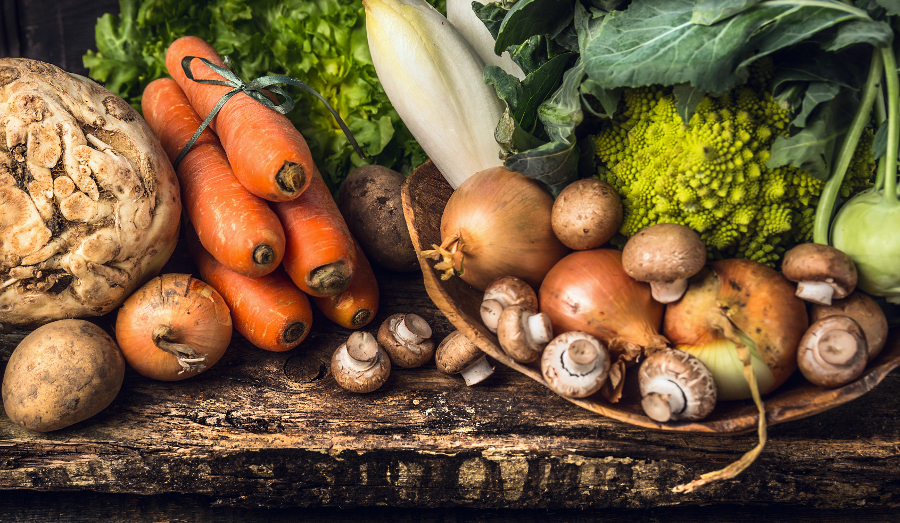If you’re looking into growing your own food, one of the issues you’ll have to deal with is how to store that food. Without proper storage, all the food you grow will just go to waste. Thankfully there are a number of vegetables that will store for long periods of time without much effort and without the need for refrigeration. Here are eight of them to get you started.
1. Potatoes
Part of the reason for potatoes’ great popularity is their ability to store for long periods of time. You’ll want to pick varieties to grow that are know for their ability to keep for long periods. Harvest your potatoes once they’re ready and discard or eat immediately any damaged potatoes.
Potatoes should be cured before storage, placed in a single layer in covered cardboard boxes in an area that’s around 50 to 60 degrees Fahrenheit and with high (80%+) humidity. Their skins will thicken, which will help them store longer. After a week of curing, transfer them to a dark area with temperatures of 45 to 55 degrees with high humidity.
2. Onions
Onions also need to be cured, and should be dried in a warm area until the greens are wilted and the neck has hardened. Onions can be tied into braids by their leaves, or the leaves can be cut so the bulbs can be stored. Onions should be stored in a cool, dry place, and not with potatoes, otherwise they will spoil quicker.
3. Tomatoes
Unlike the other vegetables on this list, tomatoes cannot be stored as-is. They need to be dried in order to store for long periods of time. Drying tomatoes can be done in the sun in areas where that is feasible, although that places them at risk of insect infestation. A better method of drying would be to use a food dehydrator or the dehydration function of modern ovens. Once dried, tomatoes can keep for several months and can be a tasty addition to salads and pasta dishes.
4. Carrots
Once carrots are harvested, allow them to dry in the sun for a few hours so that there is no surface moisture. Cut the greens and store the roots in damp sand or sawdust in a cool, dark place. Make sure to store away from potatoes, as the ethylene gas emitted by potatoes will cause them to go bad.
5. Cabbage
Storing cabbage requires them to be harvested out of the ground with their roots intact. Remove any rotten outer leaves, bury the roots in damp sand or sawdust and store them in a cool, dark place. And if you get tired of eating fresh cabbage, you can always make sauerkraut or kimchi.
6. Winter Squash and Pumpkins
Winter squash and pumpkins are among the easiest vegetables to store. Harvest them when ripe by cutting the stem a few inches above the top of the squash. Wipe off any dirt and keep them in a cool, dark place in the basement and they’ll keep for months.
7. Leek
Leek can be stored in much the same way as cabbage. Harvest the stems with roots and all, and bury the stems in moist sand or sawdust. Keep in a cool, dark place and you can keep your leek fresh for up to two months.
8. Celery
Celery can be stored in the same way as cabbage and leek, with the roots buried in sand and sawdust. It should be stored away from cabbage, as the cabbage can affect the taste of the celery. If storing celeriac (a.k.a. celery root or turnip-rooted celery), first remove the stalks and any fine small roots and bury the root body in damp sand or sawdust in a cool, dark place.
This article was originally posted on Red Tea News.





